If you haven’t noticed already, Germany does holidays, and they do them big. Easter is the second most important celebration in Germany. Many familiar Easter customs originate from Germany, such as decorated eggs and the Easter bunny. It is easily one of the most popular holidays, signifying the ending of a long cold winter and the beginning of the spring season.
“Smaller towns tend to be more traditional, but Easter has become more of a secular holiday. So even though it’s religious, it’s less likely you’ll see that in nearby areas,” explained Karin Heck, Baumholder resident and German national. “But it (Easter) is different everywhere you go in Germany.”
According to Heck, “Fasching” is the beginning of Easter. Also called “Karneval,” “Fasnet” or “Fastnacht,” Fasching historically begins on the eleventh day of the eleventh month at 11:11 a.m. when the prince and princesses are crowned. Then, there is a break to observe the Christmas and New Year’s holidays. In many parts of Germany, the “silly” or “crazy” part of Fasching begins just after the new year and culminates on the Sunday before Shrove Tuesday, commonly known as “Fat Tuesday.” It is during this time people will indulge in their favorite food and drink.
“After the big celebrations of Fasching and Carnival, people will fast until Easter weekend,” Heck explained.
Similar to Lent, Heck describes this time as “Fastenzeit,” which translates to “fasting time.”
“More religious people will give up drinking, smoking or coffee. Not everyone does this, but traditionally that is what they would do,” she said.
As the holiday approaches, “Ostermarkts,” or “Easter markets,” will pop up in many towns across the country. The same wooden stands used at Christmas markets don springtime decorations. It is here that you can find decorated Easter eggs, chocolate eggs and bunnies, spring ornaments and crafts for sale. There are fresh and dried flower arrangements and all sorts of wooden and natural Easter and spring decorations.
Found only at Ostermarkts in the Franconia region, the “Osterbrunnen,” or “Easter fountain,” is an old tradition to celebrate the importance of water as a life giver. It is believed that the water is blessed on Easter Sunday and has special powers. People of the town decorate the fountain a week before Easter and keep them up for about a week after, making the market center very colorful and festive.
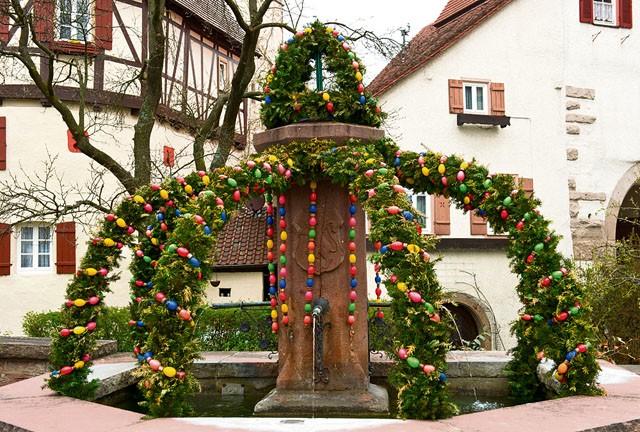
In some parts of Germany, three weeks before Easter a “Fruehlingfest” called “Sommertagszug,” which translates to “summer day parade,” welcomes summer and says goodbye to winter. These festivals often have a “Umzug,” or “parade,” made up of floats decorated for spring with children and adults walking alongside through town.
“A big part of Easter is decorating eggs,” Heck explained. “Much like Christmas, it’s a holiday for children. Many people, as my husband and I did when our children were younger, will make up baskets and hide them in the yard. On Easter morning, our kids would have to search for them. Some people will simply hide eggs and give their kids baskets to collect the eggs.”
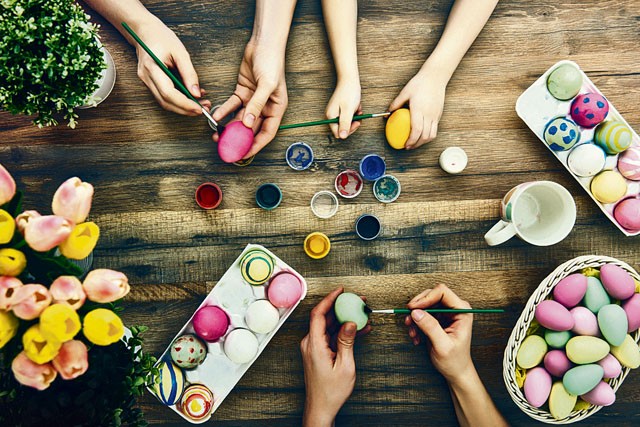
It is extremely common to find decorations and ornaments on an “Osterbaum,” or “Easter tree.” These trees are seen both inside and outside of the home and are from the cut branches of a pussy willow tree or other flowering bushes. The branches are placed in vases and decorated with hand painted wooden eggs, hollowed out real eggs, and little garlands.
The tradition of decorating eggs — the brighter and more intricate the better — is believed to date back to at least the 13th century! Much like finding presents under the Christmas tree, chocolate Easter eggs are left by the “Osterhase,” or “Easter bunny,” around bushes and trees for children to find on Easter Sunday.
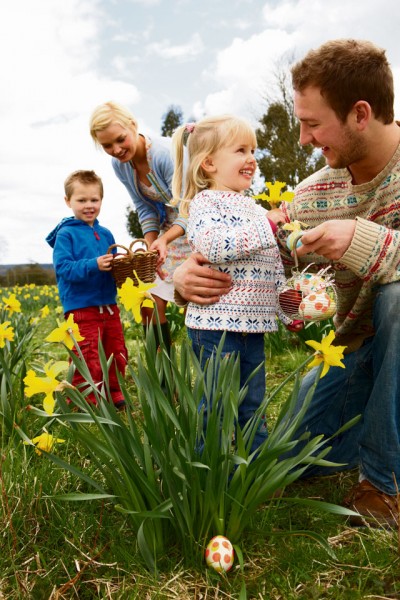
As a religious holiday in remembrance of the day Jesus was resurrected, many people will kick off Easter weekend on Maundy Thursday. In Germany, this day is often called “Gruendonnerstag,” which translates to “green Thursday.”
“We call it Green Thursday because you’re supposed to eat something green. In our family we will eat spinach with eggs and potatoes,” Heck said.
Easter traditions mark the following day, Good Friday or “Karfreitag,” as a day of mourning before celebrating Jesus’ resurrection on Monday. This day is typically a quiet day, as the word “kar” comes from the old German “kara” meaning “lamentation.”
“This is the day people will break Fastenzeit. On this day we’ll eat fish and prepare ourselves for a feast,” Heck said excitedly.
The next evening, many will gather around huge bonfires that traditionally consist of old Christmas trees. This event marks the end of winter and the coming of spring. It is also said to drive away evil spirits. Some regions in Germany will stuff hay into large wooden wheels, set them on fire, and roll them down hills. If the wheel makes it down the hill intact, it is believed this sign will bring a good harvest. Many people stay up all night to the keep the fires burning until dawn on Easter Sunday.
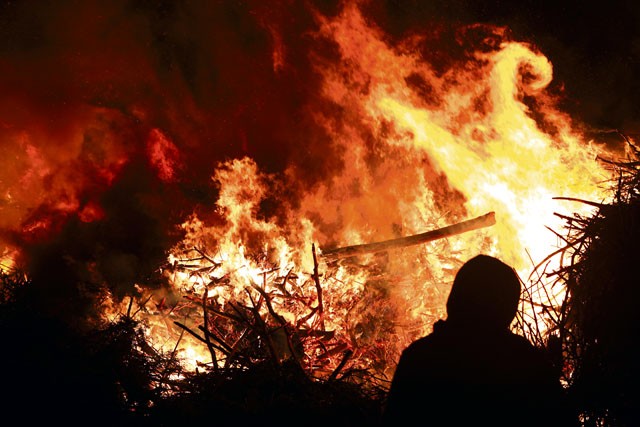
There is usually a special church service on Easter Sunday with bright and decorative spring flowers. After church, a festive breakfast, lunch or evening meal is typical. Some of the traditional food present includes: fried, scrambled or boiled eggs; sweet bread decorated with frosting and candy eggs; cookies shaped like chicks, eggs or lamb; butter in the shape of a lamb; cakes baked in the shape of a hare or lamb; roast lamb; lamb stew; and various salads. Lambs are incredibly popular on Easter because they symbolize spring and new beginnings.
“On Easter Sunday, most people will either have a huge brunch or lunch. Many families tend to eat lamb or rabbit. But no one in my family likes those meats, so we don’t have as big of a meal,” Heck said. “We do have a butter cake in the shape of a rabbit. Some people put powdered sugar on top. My mother used to put cream on top to make it look like the rabbit’s hair.”
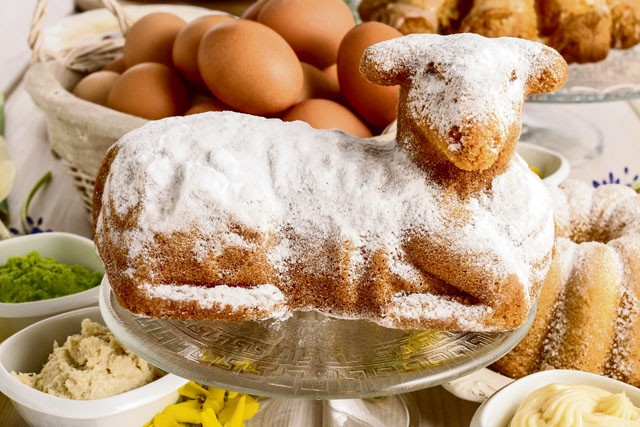
After brunch, it is tradition that many of the people in smaller towns will go for a walk to socialize and to stretch their legs after the large meal.
“It used to be, in smaller towns, that the entire town would go for a walk as a group, but over the years it has become less and less of a thing,” Heck explained.


